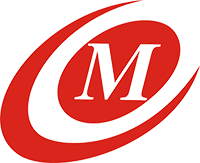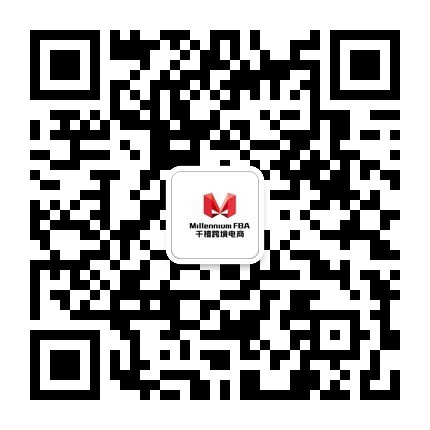Amazon fba delivery | How to Ship Directly to Amazon FBA
After doing product research, finding a winning product, and working with a supplier to create a private label product, Fulfillment-by-Amazon (FBA) sellers have the option to have their products shipped straight to Amazon’s warehouses from their supplier or to ship them to another location first, before they go to Amazon. Amazon fba delivery
Why wouldn’t sellers have their suppliers send their inventory straight to Amazon? Some sellers like to inspect the products themselves, only send a limited quantity of stock to Amazon at a time to control FBA storage costs, or any number of other reasons.
And if sellers go this route, they’ll need to know how to get their products to Amazon’s warehouses when they’re ready. So, how do you set up an FBA shipment to get your inventory into an Amazon warehouse?
For a brand new Amazon seller, navigating Seller Central and setting up your first FBA shipment can be a difficult task. I’ll go over every step of how to set your FBA shipment up correctly — using both old and new methods.
Shipping to Amazon’s warehouses: The old way vs. the new way
Recently, Amazon introduced a new “Send to Amazon” beta, which is a three-step shipment creation workflow to set up your FBA shipments. Currently, the Send to Amazon beta only allows you to create shipments for case-packed products. So if you want to send individual products into FBA, you would need to use the old method.
Let’s go over both methods for creating a shipment. If you sell retail arbitrage, private label, or wholesale, you’ll need to know how to do it.
Step by Step: Sending your FBA inventory to Amazon
Setting up your first shipment can be confusing at first, but once you do it a couple of times, you’ll be a pro.This step-by-step guide will cover the original method of setting up a shipment.
Step 1
In Seller Central, go to “Manage Inventory” and find your listing.
Step 2
On the right-hand side, choose the drop-down menu that reads “Edit” and click “Send/Replenish Inventory.”
Step 3
In this step you will need to enter your “Ship from address” if you haven’t done so already. If you have the inventory at your house or business, enter in that address.
Then you’ll need to choose between “Individual products” or “Case-packed products”.
Select “Individual products” if your shipment consists of multiple products with different SKUs or different conditions (new, used).
For example, you’d choose this option if you are selling retail arbitrage and want to ship 10 different products to Amazon at the same time.
Select “Case-packed products” if your shipment consists of one SKU. You will then be able to enter the number of cases and units per case for each SKU in the shipment.
For example, you’d choose this option if you are shipping in multiple units of your private label product.
Click “Continue to shipping plan.”
View an example of the “Case-packed product” option below:
Step 4
On this screen, you’ll enter how many units of your product are in one case and how many cases you’re shipping. In this example, I’m going to ship 50 units total. I can only fit 25 units in each case, so I’ll choose 2 as the number of cases.
Under “Total Units” below, you can see we’re shipping 50.
After you enter in the number of units per case and number of cases, click Continue.
Step 5
In this step, you’ll need to choose whether or not your products need to be prepped before shipping into Amazon. This could mean it needs to be placed in a poly bag, labeled, or bubble wrapped.
You will select the type of product from a drop down menu. As an example, I will choose “baby products.”
Amazon will let you know here what type of prep your type of product requires. If your product doesn’t fall under one of the categories shown in the drop-down menu, then you won’t need to prep.
Now, if you don’t have the supplies or materials you need to prep your products, you can have Amazon prep your products for a fee. The fee will range from $1.00 to $2.30 per unit depending on the type of prep your product requires.
Step 6
Your next step is to choose how your products are labeled. If your products require an Amazon (FNSKU) barcode, then you can choose to apply them yourself or have Amazon apply them for you.
If you choose to label the items yourself, enter in the number of labels to print and click “Print labels for this page.” You can use address label sheets to peel and stick the FNSKU barcodes onto each item.
In certain circumstances, you may need to use the manufacturer barcode. This may be the case if you are selling retail arbitrage items or wholesale items that already have a barcode on the packaging.
If your FNSKU begins with “X00,” you will need to label your products using the Amazon barcode, aka the FNSKU.
For FNSKUs beginning with “B00,” use existing manufacturer barcodes.
You will be able to see your FNSKU under “Product Name” in this section.
If you are reselling items via retail arbitrage, you still may need to use the Amazon (FNSKU) barcode instead of the manufacturer barcode, though I suggest you always use the FNSKU.
Note: You can change your FBA Product Barcode Preference to either the Amazon barcode or Manufacturer barcode. In the top right corner of Seller Central go to Settings > Fulfillment by Amazon > FBA Product Barcode Preference.
If you are selling a private label product and have your supplier print your FNSKU barcode onto your packaging, then choose Merchant for this section.
Alternatively, if you do not want to label the products yourself, you can also have Amazon label the product for you for $0.30 per unit.
Step 7
This is where you’ll find out where Amazon wants you to send your inventory.
Amazon decides where your products are sent based on demand across the country. By default, your inbound shipment settings are on “Distributed Inventory Placement,” which means that Amazon may split your shipment up to be sent to different fulfillment centers. This can be a frustrating situation, especially if your products are already packed and ready to ship.
In this example, Amazon may want to send 30 units to a warehouse in New Jersey, 15 units to a warehouse in Texas, and the remaining 5 units to a warehouse in California.
But what if you don’t want to break up your shipment? You can change your FBA shipment settings in Seller Central to send all of your units to one warehouse.
You can choose “Inventory Placement Service,” which allows quantities of a single seller SKU to be assigned to a single fulfillment center. Note that if you use this option, you’ll be charged a per-unit fee. For products weighing less than 1 pound, it costs $0.30 per unit, and items over 1 pound costs $0.40 per unit.
To change these settings go to “Settings” > “Fulfillment by Amazon” > “Inbound Settings,” and then edit.
For this example, Amazon is telling me I am sending all 50 units to ABE8 (an Amazon warehouse in New Jersey)—my shipment won’t be broken up. So I’ll choose “Approve & continue,” then “Work on shipment”.
Step 8
In this last step, you’ll choose your shipping service and how your items will be packed. After you enter in your package dimensions and weight, Amazon will give you a (low) price and you will be ready to ship!
Since this is a small shipment, I’m choosing “Small parcel delivery” and “Amazon-partnered carrier”. You can choose “Less than truckload (LTL)” if you will be shipping pallets into Amazon.
In the next section you’ll enter the units per box, how many boxes you are shipping, the dimensions, and the weight.
After you enter in that information, you can click “calculate” and Amazon will give you the shipping cost. You can then choose to accept charges and print your shipping labels.
Lastly, choose your ship date (the date you plan to ship the boxes) and print your labels! You will see two barcodes on the label. Make sure both of the barcodes are visible on each box. One barcode is for UPS, the other is for Amazon.
Once you have completed these steps, click “Complete shipment.”
That’s it! Now you can label your boxes and drop off at your nearest UPS location. You can also schedule a UPS pickup from your house if you cannot drop them off.
Create an FBA shipment using “Send to Amazon”
Now that we have reviewed the original method of creating your FBA shipment, let’s discuss the new workflow system Amazon has introduced, called “Send to Amazon.”Step 1
We’ll start off the same way as the previous steps, but instead will choose “Continue to Send to Amazon.” You can also click Send to Amazon above.
(Currently the Send to Amazon beta will only allow you to set up case-packed shipments. If you are shipping multiple SKUs per shipment, then use the original method.)
Step 2
The first thing you need to do in the Send to Amazon beta is to create a new packing template. Packing templates let you save information about how your SKUs are packed, prepped, and labeled. You can reuse them each time you replenish inventory to save you time.
Step 3
Confirm your shipping and accept the charges.
Step 4
Print your labels and ship! Once you print your shipping labels, again, make sure both barcodes are visible on the outside of your box. Then simply drop off your package at UPS or schedule a UPS pickup.
That’s it! You should now be ready to set up your first FBA shipment like a pro! If you have any other questions regarding FBA shipments or have anything else you want us to write about, let us know in the comments!





Leave a comment